 I've just come back from seeing the film 'Into Great Silence', the film made by the German film producer Philip Groening about the life of the monks at the Grande Chartreuse, the Carthusian monastery in the French Alps. The Carthusians are the order founded by St Bruno, where monastic life is somewhat less communitarian, but which is more ascetic than most other monasteries in western Christendom. Each monk lives in a cell where he eats and prays, except for the major offices in the Church and on meals on Sundays and Feasts which are in the refectory.
I've just come back from seeing the film 'Into Great Silence', the film made by the German film producer Philip Groening about the life of the monks at the Grande Chartreuse, the Carthusian monastery in the French Alps. The Carthusians are the order founded by St Bruno, where monastic life is somewhat less communitarian, but which is more ascetic than most other monasteries in western Christendom. Each monk lives in a cell where he eats and prays, except for the major offices in the Church and on meals on Sundays and Feasts which are in the refectory.The film shows the monks about their daily duties of prayer, work, study, and even the menial daily tasks. It is mostly in silence. You hear movements, the sound of the wood stove crackling, and the singing of the monks in choir, but there is only one moment where a monk speaks directly to camera. That privilege is reserved for a monk who has gone completely blind. He speaks of the joy of Christian life, and how sorrowful that the world has lost it's sense of God, for what reason can there be for living without a relationship with Him? He says there is nothing to fear in death. Then he mentioned a point which Fr Yanny, the Coptic priest (see below) said in his catechesis on Wednesday - we just see ourselves as we are now, with our cares and our worries, and our opinions, and our emotions. God sees the whole of our life from beginning to end as though in the present moment. The monk said we should therefore entrust our lives to God, for he knows the whole span of our life, and beyond our earthly life. The whole of it is present to him.

The film is quite repetitive. Two phrases which keep coming up on the screen from the Scriptures are "No one can follow me without forgetting himself" and "You have seduced me, O Lord, and I have let myself be seduced". These two phrases give the fundamental meaning to the monastic life of contemplation of the Carthusian. In the first place it is a life of sacrifice, and maybe looking at the way of life that's what most strikes us. But the second phrase is key also: the monk is not denying himself because of a hatred of the world nor a self-hatred, rather it is for love that he enters and perseveres in the monastic life. God is the great seducer and the monk is the one who allows himself to be seduced, and to enter into a deep friendship with God through Christ. The repetition is seen in the revolving of the times of prayer, of food, and of relaxation (there's a great scene towards the end of monks on a feast day walk in winter sliding down a snow laden hillside). The film as a whole represents the day from beginning to end. But it also shows the year in the turning of the seasons. The underlying sense is that this way of life isn't for one season, but is a true way of life, and that it is almost in the inevitability of the revolving of the seasons and the pattern of the days that this life takes its shape.
 Most striking is the simplicity of life in the monastery. There are none of the complications that modern secular society place upon us. There are none of the distractions of technology and media. Their lives are so simple, lived in communion with each other and with God, lived in communion with the natural world around them, lived in an integrity which comes from a life given over to one purpose in its entirety. It's very difficult for us to contemplate how that would be. I'm sure that many people would be put off from going to see the film because of the silence for three hours. We are surrounded by constant noise. On the train, in shops on a plane, in your home you are force fed with news you don't want to hear and advertisements. The only way you can escape is to make more noise yourself, or move far away from the city. It is hard to understand what such constant perfect silence would be like. I think we thirst for it really, but on another level we fear it. It's only in true silence that we meet the real God and meet our real selves, and for most of us that can be a frightening prospect.
Most striking is the simplicity of life in the monastery. There are none of the complications that modern secular society place upon us. There are none of the distractions of technology and media. Their lives are so simple, lived in communion with each other and with God, lived in communion with the natural world around them, lived in an integrity which comes from a life given over to one purpose in its entirety. It's very difficult for us to contemplate how that would be. I'm sure that many people would be put off from going to see the film because of the silence for three hours. We are surrounded by constant noise. On the train, in shops on a plane, in your home you are force fed with news you don't want to hear and advertisements. The only way you can escape is to make more noise yourself, or move far away from the city. It is hard to understand what such constant perfect silence would be like. I think we thirst for it really, but on another level we fear it. It's only in true silence that we meet the real God and meet our real selves, and for most of us that can be a frightening prospect. I had a whole pack of stuff from CAFOD the other day about their Live Simply campaign. Indeed, Archbishop Nichols came to our chaplaincy to launch this campaign back in November. What he said to me then, and I think it is so true, is that the CAFOD campaign concentrates almost entirely on two aspects of living simply - living sustainably and living in solidarity. It completely omits living spiritually. Indeed I would go further and say that the first two are only a blind hope for most of us unless we start with the third. We will not be able to make our lives simple unless the grace comes from God first. Only once we have communion with God, friendship with Christ, which attracts to us immense grace, can we then have communion with others in solidarity and communion with the world and live sustainably. If you want to see real simplicity of life then, have a look at Into Great Silence. You'll see a way of life very divorced from our own. But these are men. Yes they are monks, but they are real men. With all the needs and temptations we have too. But they, through a particular vocation that certainly most of us don't share, can teach us something about how we should live in the secular world.
 Not only can they be a strength for the Church in the way they pray for the world, but also be a sign (and they insist in their conversation recorded in the film on the symbolism of their way of life) for us of how to live in the world but not of the world.
Not only can they be a strength for the Church in the way they pray for the world, but also be a sign (and they insist in their conversation recorded in the film on the symbolism of their way of life) for us of how to live in the world but not of the world.You won't see this film on at your local multiplex, so look out for it at smaller arts cinemas. It's certainly worth the almost three hours. Take a look at the website which has an English version.


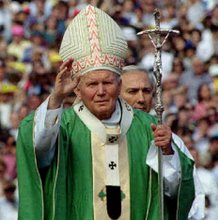
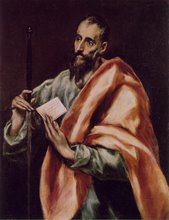
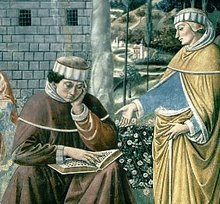
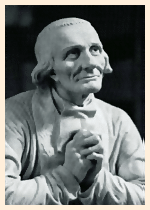




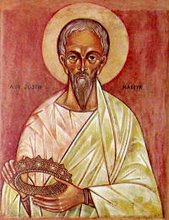

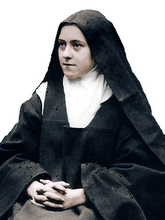
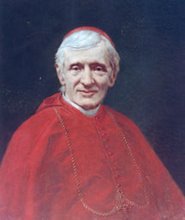
No comments:
Post a Comment